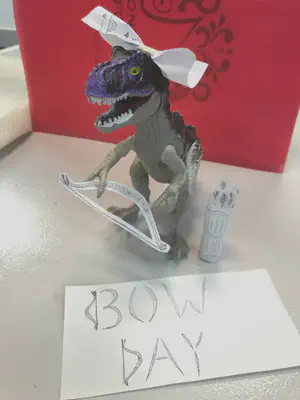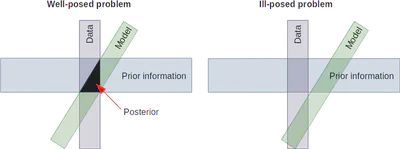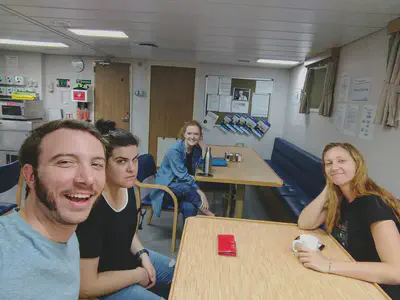Day 13 - Educational outreach
I don’t know who decides these international days of significance, but today is International Bow Day.

Of course it is not exactly clear what is meant by “Bow”. It could mean standing on the bow of the ship, or bowing to pay respect to someone/something. Either way, an opportunity was missed to stand at the bow of the RV Investigator and bow towards the sea while wearing a bow around their neck.
Sad Snappy
Unfortunately, our spate of diminished returns continue. Last night just one measly rock sample was retrieved from the seafloor.

Educational outreach
Today the educational officers on board, Olivia Belshaw and Jamie Menzies, had their first live crosses to schools in Australia and the United Kingdom. Olivia also showed us some of her work in getting secondary school kids to think like scientists. Everyday we immediately make interpretations without thinking too hard about the observations, but Olivia points out that the key to being a good scientist is to first make the observations and then think about the different ways they may be interpreted.
For example, it’s quite easy to interpret Jamiroquai’s “Canned Heat” video clip as objectively bad, but it’s not until you observe the video clip has 11 location shoots - including a lime green bathroom - that you know it is truly terrible beyond doubt.
Connection to Bayesian inference
Olivia’s talk was great because it presents a helpful lens through which to view Bayesian inference. Bayes’ theorem essentially describes the intersection of our observations (data), a model of some parameterisation, and any prior intuition we have about the problem. As scientists, we are always searching for the point where these three quantities meet - perhaps without being consciously aware of it.

Where these pieces of the Venn diagram do not intersect, then that also tells us something interesting: either our prior knowledge of the system is misinformed, the data are unreliable, or the model just isn’t appropriate for the problem we are trying to solve.
Example: you are at the bulk food store and you forgot to weigh the 1L jar you’ve brought to fill with organic lentils. You estimate it’s 20g ± 10g (prior information) and the weight after filling it is 2kg (observation). You remove 1/10th of lentils and measure the difference in weight, $\Delta W$. The jar should weigh 2kg less 10 multiples of $\Delta W$ (model). i.e. $$W = 2kg - 10\times \Delta W$$
This is a well-posed problem; an ill-posed variant would be if the scales were broken.
Thank you Olivia for teaching this to your students! You are helping the next generation of scientists to be good at their job!
Also, you have scary eyes…
